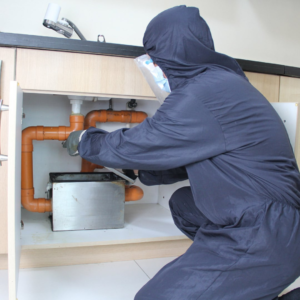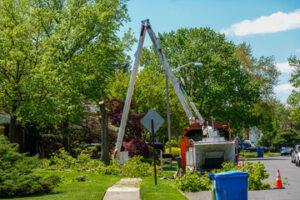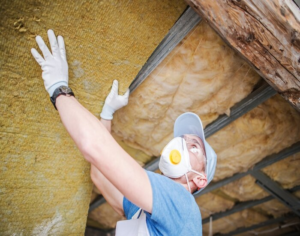Restaurants, cafeterias, and food trucks must use grease traps (interceptors) to filter out FOG from wastewater before it enters the sewer system. Failure to clean these grease traps can lead to costly plumbing problems and unpleasant odors.
Traditional gravity grease traps are usually located outdoors. They require digging large holes, constructing a concrete interceptor, and connecting it to kitchen pipes and the sewer line. Contact Grease Trap Perth now!

The cleanliness of your grease trap is essential to keeping water draining and preventing foul odors. Grease trap cleaning can be a messy job, but it’s necessary to prevent costly plumbing repairs and violations. It’s best to have an experienced service technician clean the grease trap regularly to keep it working properly.
A good rule of thumb is to have your grease trap cleaned every three months. However, if you’re in a busy restaurant, you may need to have yours cleaned more frequently. The smelly sludge that builds up in the trap over time is one of the main signs it’s time for a cleaning.
When the sludge dries out, it becomes solid and can cause blockages in the drain lines. This can cause wastewater to back up into sinks, into the sanitary sewer system, into storm drains or into outdoor areas where it can be a health hazard to customers and employees.
Having your grease traps cleaned professionally reduces the foul odors that can permeate your kitchen and restaurant, prevents the clogs and backups, and helps your business run smoothly. A professional service will also know the laws, rules and regulations at the local, state and federal level and can help you avoid penalties.
Aside from a thorough cleaning, there are a few other ways to help your grease traps stay in good shape. For instance, educating your employees on what can and cannot be dumped down the sink is one of the easiest ways to protect your grease traps. Similarly, keeping signs posted above and around the sinks and disposal areas will help remind everyone.
Another way to protect your grease traps is to avoid adding bleach, emulsifiers or other chemical cleaners. These can kill the natural bacteria that live in your grease trap and break down FOG. They can also contaminate the wastewater that goes into your city’s sewer line and sewage treatment plant. In addition, these chemicals can be hazardous to your employees and customers.
Durability
Historically, the grease traps installed in restaurants and commercial food facilities were crude bits of equipment. The earliest designs were often made of metal, which corrodes over time. This makes it important to schedule regular cleaning and inspections. If your facility has a metal grease trap, it’s worth investigating a plastic option to reduce replacement costs.
The way that a grease interceptor is designed is also a key factor in its durability. The best ones feature baffle walls to separate wastewater and solids, allowing only water to flow into the sanitary sewer system. They also have a manhole cover that is made of a durable material, such as stainless steel or polyethylene, and is secured with a specialized clamp to ensure it doesn’t fall out.
One of the biggest issues that can arise with grease traps is that they become clogged. This can restrict the normal flow of wastewater in a building, creating problems with sinks and other appliances. The best way to prevent this is by having a professional clean the grease trap on a regular basis.
In addition to having your grease trap cleaned, it’s a good idea to regularly perform line jetting services. This service involves shooting high-pressure water into your grease trap pipes to break up any blockages that may be forming. This is an effective solution for removing hardened grease that has formed in your trap’s pipe walls, and it can be done at a much cheaper price than replacing the entire grease trap.
Keeping up with the maintenance of your grease trap is essential to the smooth operation of any commercial kitchen. Failing to do so can lead to costly backflow issues, foul odors, and regulatory violations. To avoid these problems, it’s important to hire a company that specializes in grease trap repair and cleaning services. The professionals at AmeriTex Septic & Grease Services can provide you with the services you need to keep your grease trap functioning properly. Contact us today to request a quote. Our expert technicians will take a proactive approach to maintaining your grease trap, preventing backflow issues and saving you money in the long run.
Safety
Grease traps and interceptors are vital to a restaurant’s ability to run smoothly, but they can also pose serious safety risks when they are not properly cleaned. Failing to clean your grease trap correctly or at the correct interval can result in clogs, which leads to wastewater backups and potential sewer line issues. This can cost you a fortune in both cleaning costs and expensive repairs.
In addition, a dirty grease trap can present a number of other safety hazards for your employees. For instance, if the grease trap is deep enough, it may be considered a permit-required confined space. This means that it must be properly equipped with oxygen monitors, and workers entering the trap should wear a face mask to protect against fume inhalation.
Keeping your grease trap clean reduces the risk of fire, as well as the health risks associated with food poisoning. Odors caused by a dirty grease trap can also make customers turn away or leave negative reviews, so this is another area where it pays to invest in a high-quality product.
Grease traps are designed to prevent fats, oils, and grease (FOG) from exiting a kitchen facility and entering the municipal sewer system. These compounds can stick to the inside of sewer lines, leading to blockages, sewage backups, and other serious problems.
The primary function of a grease trap is to separate these solids from the wastewater that goes down the drain. The waste water enters the trap through an inlet pipe, where it is filtered by a series of baffles and other mechanisms. The grease and solids are collected in the trap, while the water exits through a separating screen that allows the FOG to be separated from the wastewater.
A grease trap must be pumped out regularly to remove the collected FOG. It’s important to use a commercial plumbing company that has the equipment and training necessary to do this safely. Leaving a grease trap to overflow can lead to costly clogs in sink drain lines, as well as sanitary sewer overflow and backups into neighbors’ properties.
Environmental Impact
A well-maintained grease trap is not only an essential tool for restaurants but also contributes to environmental sustainability. This is because a properly functioning grease trap can mitigate odors and nuisances that can affect the public. It can also protect local water treatment facilities from excessive strain caused by FOGs in sewage systems.
In addition, properly maintained grease traps can help to prevent costly and potentially hazardous backups in the kitchen drain system. Food service establishments should regularly inspect and clean grease traps to ensure proper functionality and compliance with regulatory requirements. The frequency of cleaning varies depending on the volume of food waste in each facility.
Grease traps should be sized appropriately to capture the maximum amount of FOGs, while minimizing overflows and blockages. They should be constructed from materials that are resistant to corrosion and chemical degradation. Additionally, they should have baffle walls to separate waste streams and reduce the risk of overflows.
Restaurants should also hire a professional grease trap service company to conduct regular inspections and cleaning. Many regions have specific regulations governing the proper disposal of FOG waste, and non-compliance can result in fines. In some cases, egregious or chronic non-compliance can lead to operational disruptions, such as forced closure until compliance is restored.
When FOGs are disposed of improperly, they can cause serious environmental harm. They can contaminate water bodies, clog municipal sewer lines, and disrupt wastewater treatment plants. FOGs can also promote the growth of harmful bacteria and algae, which produce toxins that are toxic to humans and animals. These algal blooms can deplete oxygen levels in water bodies, resulting in dead zones where no aquatic life can survive.
To minimize the impact of FOGs on the environment, restaurants should recycle and repurpose their grease trap waste where possible. It is possible to collaborate with facilities that convert grease into energy-rich biodiesel and other useful products, which can reduce the demand for new oil or gas. In addition, the use of sustainable materials in the construction of grease traps is becoming increasingly important, as companies strive to improve efficiency and reduce their environmental footprint.






